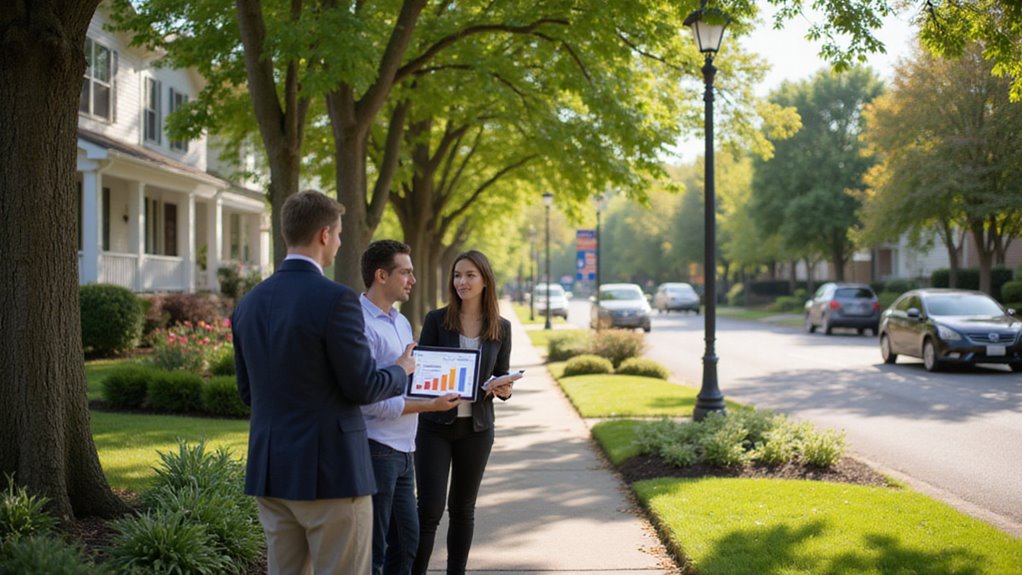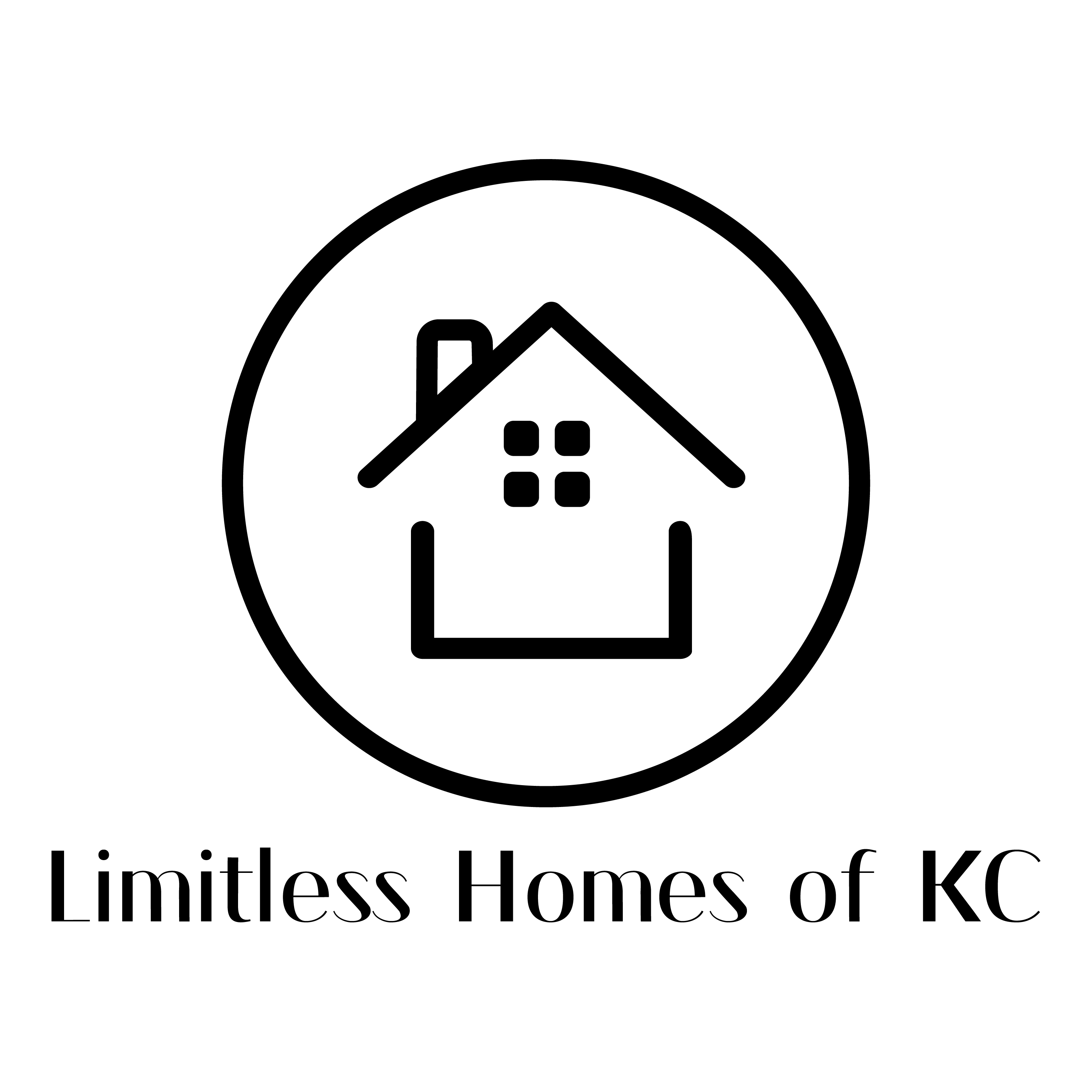Setting the right price for a rental property you want to sell can be confusing. Many owners think rental income alone determines the value. However, the real process involves more than just one factor.
If you ignore market trends and recent sales, you could lose money. Buyers also care about lease terms, property condition, and local demand. Pricing too high or too low turns away the best buyers.
To price a rental property for sale, you must balance rental income, market data, and neighborhood trends. This blog will guide you through the steps to price your property for a fast and profitable sale. You will feel confident setting the right price after reading this post.
Key Takeaways
- Analyze recent sales and rental data of similar properties in the neighborhood to set a competitive price.
- Calculate gross rental yield and cap rate to highlight the property’s income potential for investors.
- Factor in property condition, unique features, and any recent upgrades impacting value.
- Consider local market demand, vacancy rates, and area amenities to adjust pricing.
- Consult with real estate professionals to ensure compliance with regulations and optimize pricing strategy.
Understanding the Local Real Estate Market

To set the right price for your rental, you must study the local real estate market. Rental prices depend on recent trends, vacancy rates, and neighborhood demand. Local data helps you make smart pricing decisions. Demographic changes and job growth can affect future rental values. If your property is well-maintained, you can often charge more. The property’s condition should meet or exceed local standards.
Local laws or rent control rules may affect how much you can charge. If you ignore these regulations, you could face penalties. Always check legal requirements before setting your price. Buyers and investors may also consider long-term effects on property value, such as potential risks or maintenance needs, when evaluating your rental compared to others in the area. Additionally, understanding distressed properties in your market can help you position your rental competitively and anticipate buyer concerns.
Evaluating Comparable Property Sales
Comparable sales help you set a fair rental price. They show what similar homes have sold for in your area. If you use recent sales, your price will match the current market. Reviewing comparable sales in your area ensures your rental price aligns with what similar homes are currently selling for.
You should look for homes with similar size, age, and location. If a property sold in the last three to six months, it gives the best comparison. Check if the homes had updates or special features. Reviewing market comparables helps you avoid both overpricing and underpricing your property.
Days on the market and final sale prices are important details. If a home sold quickly or over the asking price, demand may be high. These facts help you avoid pricing your rental too high or too low. Computers can assist in evaluating detailed differences between comparable homes to provide a more accurate estimate.
Factoring in Rental Income and Yield

You need to calculate the gross rental yield to quantify your property’s income potential relative to its value. Analyze your net operating income by subtracting all operating expenses from your expected rental revenue. Compare current market rental rates to ensure your pricing strategy aligns with local demand and maximizes returns.
When evaluating your options, consider the advantages of cash buyers who can accelerate the sale process and reduce risks associated with financing. To find qualified purchasers, you can use methods such as reviewing local public records to identify active cash buyers in your area.
Calculating Gross Rental Yield
Gross rental yield helps investors measure how much income a property can generate each year. To find it, divide yearly rent by the property’s price and multiply by 100. This gives a percentage that shows potential income from the property.
Investors should check past rent trends to make sure income estimates are accurate. If you use past data, you can avoid guessing too high. This makes your yield calculation more reliable.
Property tax assessments also affect your yield. If taxes are high, net income will be lower. Always include taxes when comparing properties.
Market comparables help you set realistic expectations. If similar properties have lower rent or prices, your yield may be too high. Comparing local sales and rentals keeps your numbers honest.
A high gross rental yield usually means strong demand and good pricing. If a property has a low yield, it may be overpriced or in low demand. Always use yield as one of several tools when evaluating investments.
Assessing Net Operating Income
Net operating income (NOI) is important when setting a price for rental property. It shows how much profit a property makes after paying operating costs. Buyers use NOI to judge if the property is a good investment.
NOI includes all rent collected and subtracts expenses like taxes and insurance. It does not include loan payments or depreciation. If you focus on NOI, you can set a fair and attractive price.
This table shows a simple example:
| Income/Expense | Example Calculation |
|---|---|
| Rental Income | $2,000 x 12 months |
| Property Tax | $2,400 per year |
| Insurance | $900 per year |
If you analyze NOI, you can price your property well. This helps attract more serious buyers. It also helps you explain the value of your property clearly.
Comparing Market Rental Rates
Comparing market rental rates means checking if your property’s rent matches others nearby. This helps you see if your rental income is fair. Investors should use this step before setting any rent price.
Start by looking at recent rents for similar homes in your area. If you find a pattern, use it to set a competitive rent. This will help attract and keep good tenants.
If rents have changed a lot in the last two years, you should watch for future changes. Such shifts can affect your income and your property’s value. Adjust your rent if needed to avoid losing money.
Tenant turnover can cost you time and money. If your property sits empty, you lose rental income. If turnover is high, consider ways to keep tenants longer.
Assessing Current Lease Terms and Tenant Occupancy

To set a new rental price, first review your current lease terms and check who lives in the property. Look at lease end dates, renewal options, and rent increases. These details help predict future income for buyers. Reliable tenants and high occupancy make your property more attractive. If the property is fully or mostly occupied, you can often ask for a higher price. Long-term leases may also add value.
Check if tenants care for the garden or if you recently upgraded appliances. These factors can lower property expenses and raise its value. If these benefits exist, mention them when marketing the property. Buyers will closely examine lease details and tenant stability before making offers. Strong leases and good tenants can speed up a sale. Weak leases or unreliable tenants may lower the property’s appeal. When pricing the property, consider market trends such as regional supply and demand, as these can directly impact what buyers are willing to pay. You should also focus on preparing the home to ensure it is appealing to prospective buyers and justifies your asking price.
Considering the Condition of the Property
The property’s condition is a major factor in its value. Buyers and renters judge properties by how well they are maintained. If a home looks neglected, its price will likely drop. You should check the structure, roof, and main systems for any problems. If these parts need repair, buyers may offer less. Keeping everything in good shape helps the property sell faster. The home’s appearance is also important.
Fresh paint, modern fixtures, and tidy gardens make a big difference. If you update these areas, you may get a higher price. Knowing when to sell property as-is can also help you avoid unnecessary expenses and appeal to cash buyers looking for quick transactions. If you plan upgrades, estimate their cost and possible return. A small investment in repairs can lead to bigger profits. Careful planning gives you an advantage in the market. Before listing, make sure to identify liens on the property, since unresolved liens can complicate or delay the sale process.
Analyzing Property Location and Neighborhood Trends

You’ll want to examine local market demand by tracking vacancy rates, rental price trends, and population growth in the area. Analyze how proximity to amenities like transit, schools, and shopping affects tenant interest and willingness to pay. By quantifying these neighborhood factors, you can set a rental rate that aligns with real-time market dynamics.
When analyzing the area, consider comparable listings and current market conditions, as this will help you optimize your sale price and attract serious buyers. Assessing the land value in relation to nearby amenities and appreciating areas can provide additional insight into your property’s long-term potential and appeal to investors.
Assessing Local Market Demand
Assessing local market demand means checking if people want to rent in your area. Property location and neighborhood trends are key factors. If demand is high, you can earn more from rentals.
You should look at recent occupancy rates and how fast similar properties are rented. Average rental prices also help show if your area is popular. If prices are rising, it means more people want to rent there.
If vacancy rates are low, you have a strong rental market. Population growth and new jobs usually increase rental demand. If these factors are positive, your property value may go up.
Use these facts to set a fair rental price. If you rely on this data, you can stay ahead of market changes. Market trends help you make smart investment choices.
Evaluating Nearby Amenities
Nearby amenities can greatly affect rental prices. Homes close to parks, shops, or schools are usually more valuable. Buyers prefer locations with convenient access to daily needs.
If your property is near a popular amenity, you may charge a higher rent. Recent data shows walkable locations often sell faster and at better prices. A good walkability score can increase your property’s value by 5-10%.
Compare your property with others that have similar amenities. Superior access to conveniences may justify a higher price. These features make your property more appealing to renters and buyers.
Reviewing Historical Appreciation Rates
Historical appreciation rates show how property values have changed over time. Reviewing these rates helps you understand your property’s past and future value. If you study historic data, you can make better decisions about setting your price.
You should compare appreciation rates in your neighborhood with those in similar areas. This helps you see if your area grows faster, slower, or at the same pace as others. If your area lags, you may need to adjust your price. When analyzing appreciation, it’s also important to consider the stepped-up basis if the property was inherited, since this affects the value used for tax purposes.
Look for patterns over the past 5-10 years to spot steady or unusual price growth. You can use these patterns to judge if recent increases will last. If trends seem irregular, be cautious about relying on recent jumps.
Consider outside influences like job growth and new infrastructure. These factors can boost property values over time. If your area has seen such changes, it may explain higher appreciation rates.
You can also use the sale comparison approach to evaluate how your property’s value stacks up against recent sales in your neighborhood, which can provide valuable context for interpreting historical appreciation rates.
Accounting for Vacancy Rates and Market Demand

Vacancy rates and market demand both affect how you should price your rental property. High vacancy rates mean there are more empty units than renters. This usually pushes prices down or requires extra incentives for tenants.
You should check local rental listings and property management data to see how long units stay empty. If units remain vacant for many weeks, consider lowering your price. Short vacancy times usually mean you can set a higher price.
Demand also plays a big role in pricing decisions. Look at rental application numbers, population changes, and job growth in your area. If demand is strong, you can set a higher price, but if it drops, adjust your price to stay competitive.
If you measure both vacancy and demand, you can align your price with current market conditions. This approach helps you attract tenants quickly and maximize your potential profits.
If you’re considering selling your rental, fast closing possible with some cash home buyers can minimize vacancy losses and speed up your overall return.
Calculating Capitalization Rates
Calculating capitalization rates helps investors see how much return a rental property might offer. The cap rate compares a property’s income to its price. Use it to judge if a property is a good investment.
First, calculate the Net Operating Income (NOI). Subtract all regular expenses from the total rent collected. This gives you the income the property earns each year.
Next, find the property’s current market value. You can use recent sales or a professional appraisal to do this. If you cannot find exact sales, use the closest match.
Divide the NOI by the market value to get the cap rate. The answer shows the property’s expected return as a percentage. If the cap rate is high, the property may offer better returns.
Weighing the Impact of Property Management Arrangements
You need to factor in property management fees, as they directly reduce your net income and influence your pricing strategy. Analyze whether your management agreement allows for lease transfers, since this can impact buyer interest and streamline ownership changes. By quantifying these variables, you’ll position your rental competitively in the market.
Effect on Net Income
A property management agreement can directly affect your rental property’s net income. Management fees lower your net operating income right away. Service quality and advice from managers can also change your final earnings.
Management fees usually take 8-12% of your monthly rent. If you hire a manager, you may see less net income due to these fees. However, their skills can sometimes increase your revenue.
Professional managers can help raise occupancy rates and rent prices. They may use better marketing or suggest simple upgrades. If this happens, your total income can grow.
Good managers can also lower your repair and maintenance costs. They often have deals with vendors for cheaper services. If costs go down, your net income may improve.
Evaluating these factors gives you a clearer view of your property’s true earning power. This helps you set a smart and realistic sale price. If you analyze each part, you can make better decisions when selling.
Lease Transfer Considerations
Lease transfer terms in your management agreement can help or hurt a property sale. Flexible policies make your property more attractive, as buyers want easy tenant transitions. Restrictive terms or hard negotiations may reduce buyer interest and slow the sale.
You should check how your management company’s rules affect price and the buyer’s review process. Properties with simple transfer terms sell 22% faster than others. Buyers also pay more for buildings managed by firms with good reputations.
If you address lease transfer issues early, you make the property easier to sell. Review your agreement and fix possible problems before listing. This preparation can boost your property’s market appeal.
Adjusting for Unique Features and Amenities
Unique features and amenities can raise your rental price above basic models. Items like luxury appliances or smart systems are often worth more. You should adjust your price to reflect these extras.
First, compare your property to others with similar features. If you find a difference in price, note how much each feature adds. This gives you a clear starting point.
Next, check local sales data and tenant feedback for value estimates. If you are unsure, use appraiser guidelines. Assign a dollar value to each upgrade.
Finally, add these values to your base rent. Make sure your total price matches market demand. If you price too high, you may lose potential tenants.
Consulting With Real Estate Professionals
Real estate professionals help you set the right price for your rental property. They use local market data and recent rental trends. If you want an accurate price, consulting them is a smart choice.
Agents consider your responsibilities like maintenance and utilities when recommending prices. They also know how a property inspection can affect your price. If any issues are found, you may need to adjust your price before listing.
Professionals share up-to-date market information with you. Their advice helps you avoid setting the price too high. If you follow their guidance, you are more likely to attract serious buyers or investors.
Incorporating Tax Implications and Selling Costs
Accurate pricing depends on knowing how taxes and selling costs affect your final profit. Taxes like capital gains and selling costs lower your net proceeds. You need to include these in your planning from the start.
If you want to estimate your selling costs, add up agent commissions, legal fees, and any repairs you must make. Sellers usually pay agents 5-6% of the sale price as commission. Repairs and closing costs can vary by property and location.
You should also check your possible tax bill before listing your property. Review capital gains and depreciation recapture taxes using the latest IRS rules. State income taxes might also apply, depending on where you live.
If you want to know your true profit, subtract taxes and selling costs from your expected sale price. Your net proceeds will help you choose the right listing price. Careful calculations give you a realistic view of your financial outcome.
Implementing a Pricing Strategy for Maximum Exposure
Setting the right price helps your property get seen by more buyers. If you price your home just below common search limits, more people will find it. For example, a price of $299,900 appears in more searches than $300,000.
You should look at recent sales of similar homes to choose a fair price. Adjust the price if your home is rented, needs repairs, or if it is a slow season. A competitive price makes your listing more attractive.
Good photos and virtual tours can help your home stand out online. High-quality images and virtual staging get more clicks and showings. If your listing looks appealing, more buyers may contact you and act quickly.
Conclusion
If you want to sell your rental property, careful pricing is essential. If you research the market and consider all relevant factors, you can set a fair and attractive price. This approach helps you reach serious buyers and maximize your return.
If you prefer a faster and simpler sale, we buy houses for cash. If your property has tenants or needs repairs, we can still make an offer. This can help you avoid the hassle of traditional sales.
If you want to sell your rental property quickly, contact us at Limitless Homes of KC. We are ready to provide a fair cash offer. Let us help you make your sale simple and stress-free.

